How to Prepare Your Cut Flower Garden Bed for the Spring Season
Are you growing a cut flower garden this year? In this post, we’ll walk through the essential steps to wake up your winter garden and how to prepare a flower bed for spring planting.
From assessing your garden’s condition and amending the soil to choosing the right flowers and using best practices for layout and planning, this guide has what you’ll need to create a thriving cutting garden.
The key to a successful garden starts before the first plant is even planted. So, grab your gardening gloves, and let’s begin the important task of bringing our garden back to life.
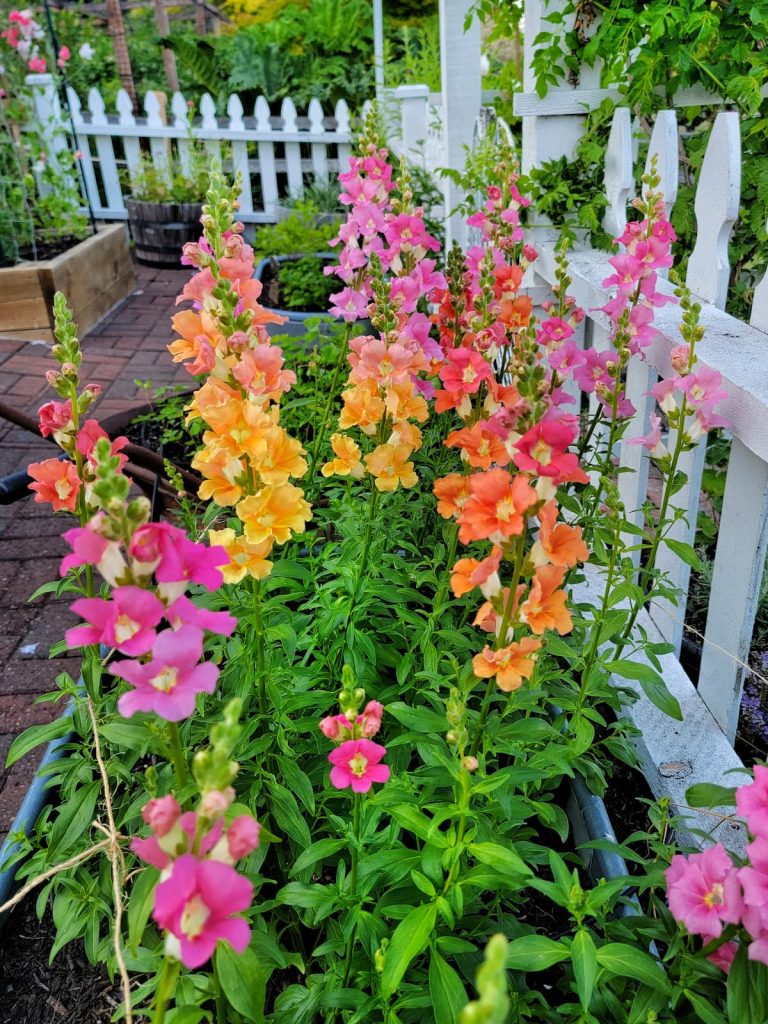
As an Amazon affiliate, I earn from qualifying purchases at no extra cost to you. My blog contains other affiliate links for your convenience as well. Click here to read my privacy policy.
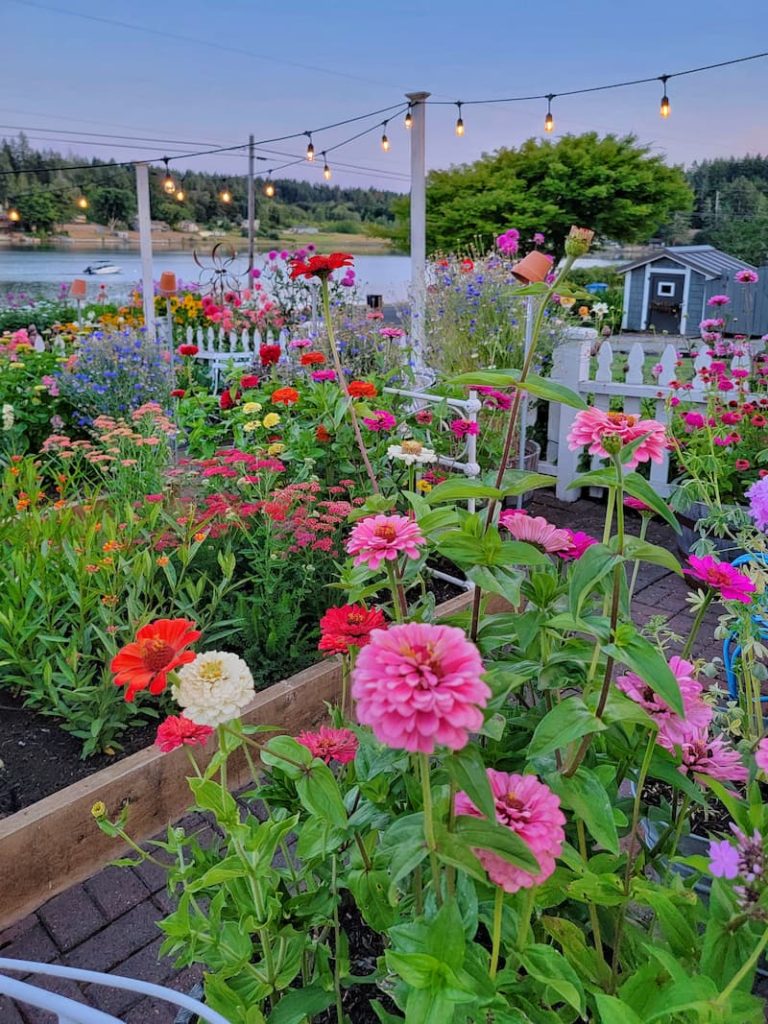
An Introduction To My Cut Flower Garden
So, let me catch you up if you’re new here.
My growing zone is 8b, and we live about 60 miles SW of Seattle, WA. There’s usually little danger of frost around mid-April where we are located.
I’m a hobby gardener who has a small cut flower garden and grows seeds inside a greenhouse. Each raised bed and garden container contains flowers that bloom at different times throughout the growing season.
Spring bulbs like tulips and daffodils are the first flowers to enjoy, followed by early summer sweet peas and stunning summer staples like cosmos and zinnias.
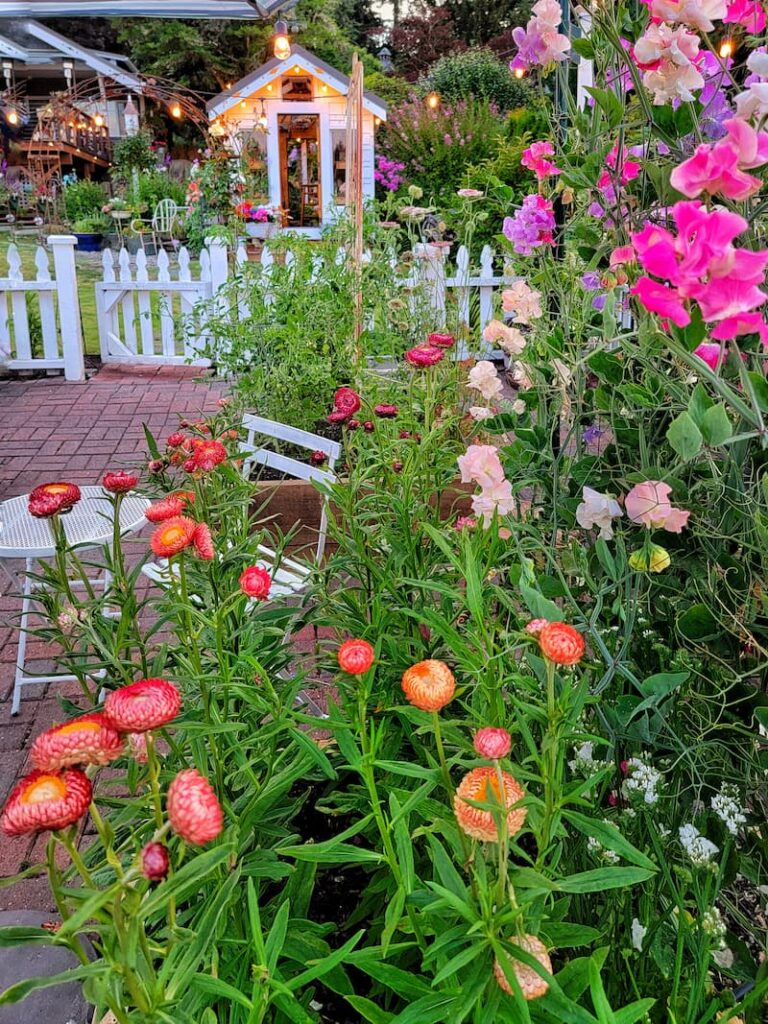
What Is Unique About a Cut Flower Garden Bed?
A cut flower garden is specifically designed for harvesting fresh cut flowers, which differs from other garden bed types.
As hard as it may mentally be to cut your garden flowers to enjoy inside, it will help the production and health of your plants. Most cutting flowers thrive from deadheading and harvesting. The more you cut, the more they will produce.
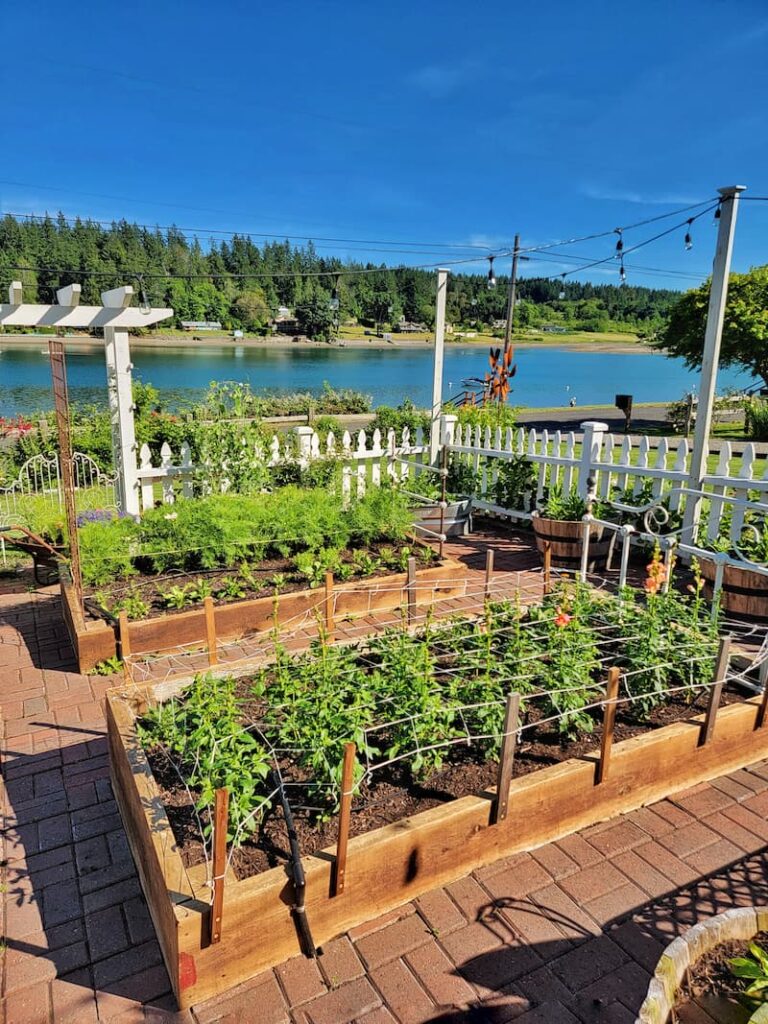
Finding the Right Location for a New Garden Bed
If you don’t already have an established garden bed, the first step to preparing your new flower garden is finding the right location.
Check to ensure the area where you’re considering growing your garden is free from tree roots or buried utility lines. Also, make sure the space has well-drained soil to prevent waterlogging, which can harm plant health.
Preparing your cut flower garden beds for spring includes selecting a sunny location for optimal bloom growth.
Consider the amount of sunlight the area receives daily. Most flowering plants thrive in full sun, requiring at least six hours of direct sunlight to bloom abundantly. Evaluate the exposure throughout the day to guide your plant selection to match the garden’s specific conditions.
Another factor to consider is wind exposure. Excessively windy locations can damage delicate flowers and dry out the soil more quickly. Choose robust plants that can withstand these conditions if your garden area is prone to wind.
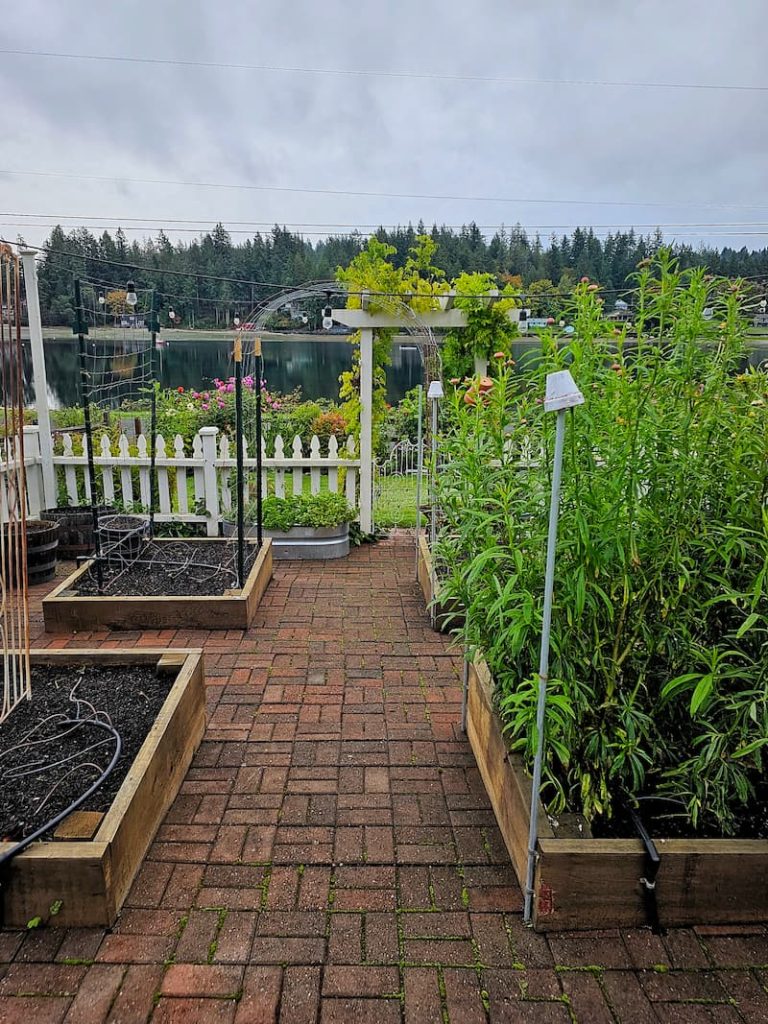
Prepare Your Tools
Before diving into the physical labor of garden bed preparation, take inventory of your gardening tools and supplies.
Start by inspecting your tools to ensure they’re in good condition. Look for signs of wear and tear, such as rust on metal parts, cracks in wooden handles, or dull blades.
Consider repairing or replacing any tools before the gardening season begins if any tools are damaged.
A sharp pair of pruners, a sturdy shovel, and a reliable rake are indispensable tools for preparing and maintaining your garden beds.
Clean cuts from sharp blades can help prevent disease transmission between plants. Sharpen blades and apply oil to moving parts to ensure smooth operation.
Garden Supplies and Tools
Check out my favorite garden supplies and tools for the growing season. Whether you’re looking for potting soil or deer repellent, you’ll find what I use in my own garden.
Stock Up on Essential Garden Supplies
Make sure you have enough gloves on hand, compost, mulch, and any specific soil amendments your garden might need to prepare a flower bed for spring.
Opt for organic mulches and compost to enrich your soil naturally.
If you use plastic pots or trays, clean and reuse them year after year to minimize waste. Embracing sustainable gardening practices not only benefits your garden but also the planet.
Remember labeling and organization. Labeling your tools and supplies can save time and frustration, helping you quickly find what you need.
Organizing your storage area, whether a shed, garage or a specific yard corner, will make gardening tasks easier.
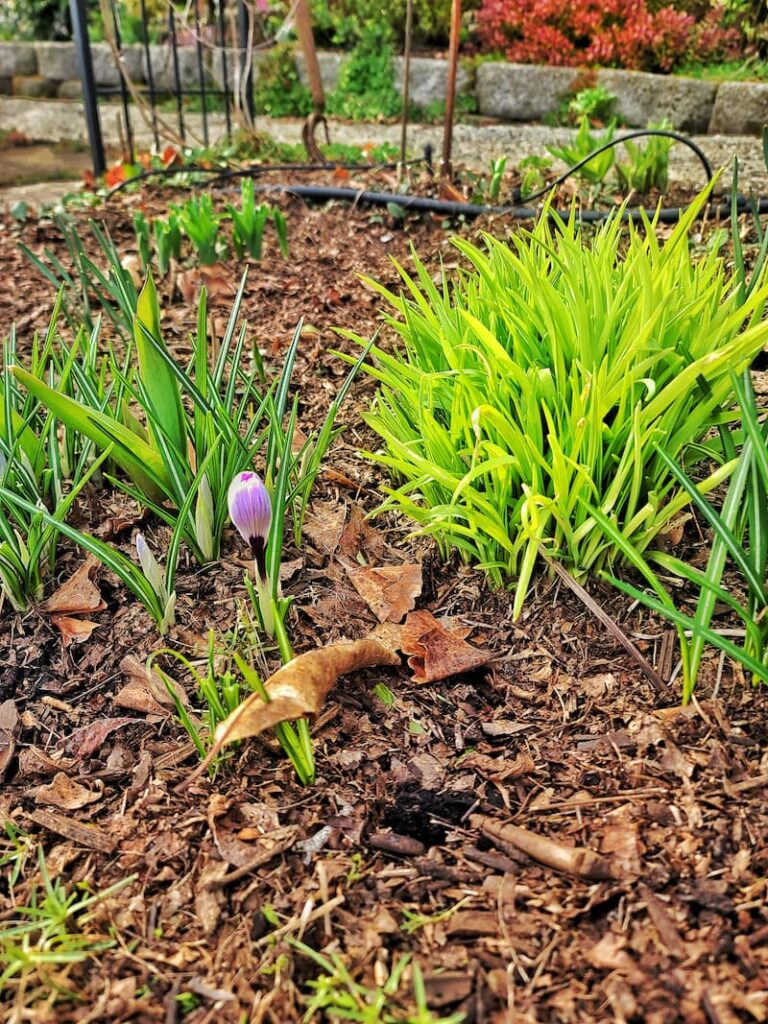
Check Plants for Winter Damage
Prepare your flower bed for spring by assessing for any signs of winter damage when the first signs of spring start to show.
This is an important step for existing gardens, as it will help ensure that perennials remain healthy and vibrant throughout the upcoming growing season.
Inspect your perennial plants closely for any frostbite on leaves, broken branches, or signs of disease that harsh winter conditions may have caused.
Pay special attention to plants’ bases and the soil around them; look for signs of heaving, which occurs when plants are pushed out of the ground due to the freeze-thaw cycle.
Clean Any Leaves and Debris from Existing Garden Beds
When preparing beds for spring planting, clear away any leaves, twigs, and debris accumulated over the fall and winter months. This tidies up your garden visually and has several practical benefits.
Garden bed preparation includes removing this layer of organic material that can prevent the growth of mold, fungi, and diseases that thrive in damp, decomposing matter.
It also allows sunlight and air to reach the soil more effectively, warming it up and improving the conditions for seed germination and plant growth.
This process also allows you to spot hidden pests or signs of disease early on before they can cause significant damage.
Seed Starting Supplies
Check out my favorite supplies and tools for starting seeds indoors. Whether you’re looking for grow lights or a seed starting mix, you’ll find what I use in my own greenhouse.
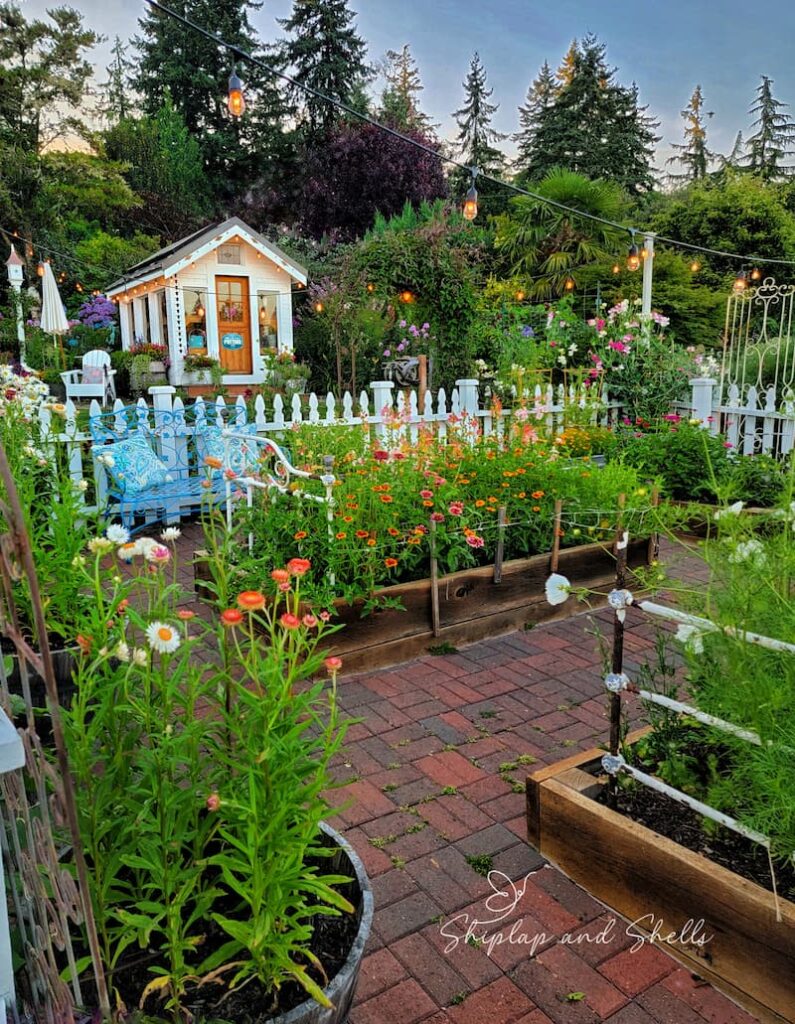
Testing and Preparing Your Soil
Enriching the garden soil with plenty of organic matter will help support the nutritional needs of fast-growing floral varieties.
Perform a Soil Test
It’s a good idea to perform a soil test to check the nutrient and pH levels before planting your seedlings.
This will give you a better understanding of how your soil will perform and what amendments need to be added.
Many beginning gardeners pass on this step but usually make the same mistake. It is such an important part of the process.
Soil test options are available. You can buy an inexpensive test or hire a local garden resource center to test your soil conditions.
How to Prepare Soil for Cut Flower Garden
You always get what you put into your garden, and soil preparation is an investment in your garden’s future that you don’t want to skip.
Work the soil when it’s moist to help maintain good air porosity and soil structure. Pick up a handful of soil and squeeze it to check your soil moisture content. You want the soil to stay in a ball in your hand and then break apart when tapped.
Soil can be compacted over time from heavy rain and other forces, so it’s important to loosen it before planting. When the soil is dry and crumbly, use a shovel or garden fork to turn it to remove rocks or roots.
SHOP FOR TOOLS BY CLICKING ON THE IMAGE
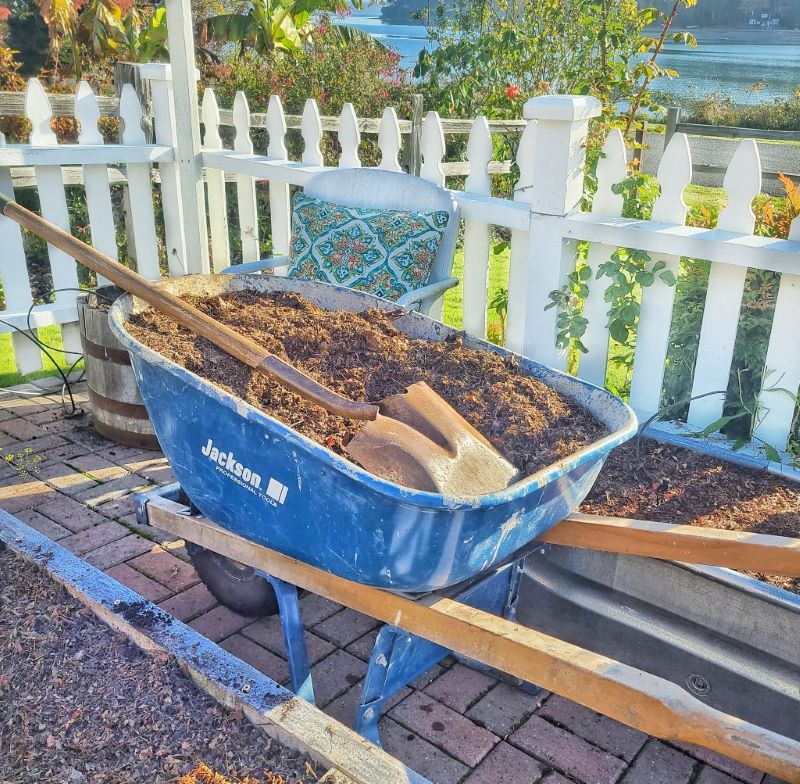
Feed Your Soil
The right soil is important when preparing your garden beds for healthy flowers.
Compost has many benefits, such as improving soil structure, enhancing soil fertility, helping to retain moisture, and providing nutrients needed for healthy plant growth.
If you’re planting flowers in an existing bed you used last year, add a 2–3-inch layer of compost to the bed in spring. Turn it into the soil using a shovel or garden fork, going at least 12 inches deep.
After turning this compost into the soil, you may want to add another layer to act as mulch. This helps retain moisture and suppress weeds, ensuring your blooms are the main focus.
If you add organic matter in the fall, adding more in the spring isn’t necessary, but adding compost twice a year can help improve poor-quality soil much more quickly. The organic matter gets used each year and must be replenished to keep plants performing their best.
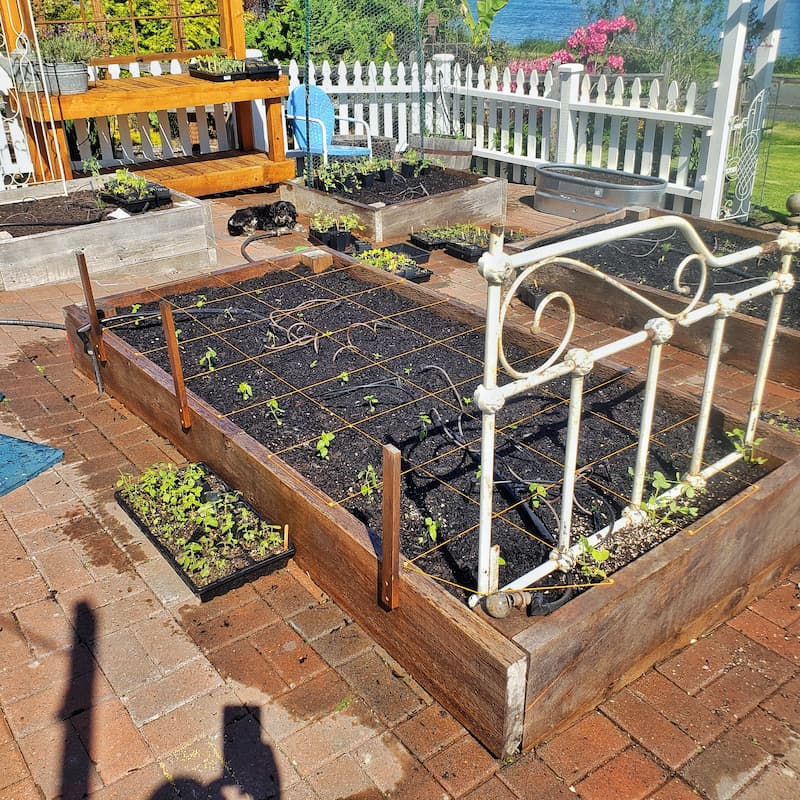
Plan a Water System
When starting a cut flower garden, plan for an efficient water system that will keep the soil consistently moist without becoming waterlogged.
Avoid overhead watering to reduce the risk of fungal diseases due to leaf wetness. Instead, opt for soaker hoses or drip irrigation systems. These methods deliver water directly to the plant’s root zone, minimizing evaporation and reducing waste.
Setting Up a Watering System
When setting up your watering system, consider the layout and size of your garden bed and the specific water requirements of your plants. Recognizing that different plants and flower types may have varied watering needs is key to optimizing water use efficiently.
Install irrigation lines right after amending the soil and before planting to target the root zones of your plants.
Consider adding a timer to your irrigation setup to conserve water further and guarantee consistent watering, especially during cooler parts of the day, to decrease evaporation.
Monitor Soil Moisture Regularly
Monitor soil moisture regularly to avoid over- or underwatering. A soil moisture gauge can eliminate guesswork by indicating the optimal watering times.
Mulching with organic materials like straw or wood chips helps retain soil moisture, reduces runoff, and gradually enriches the soil as it breaks down, decreasing the frequency of watering needed.
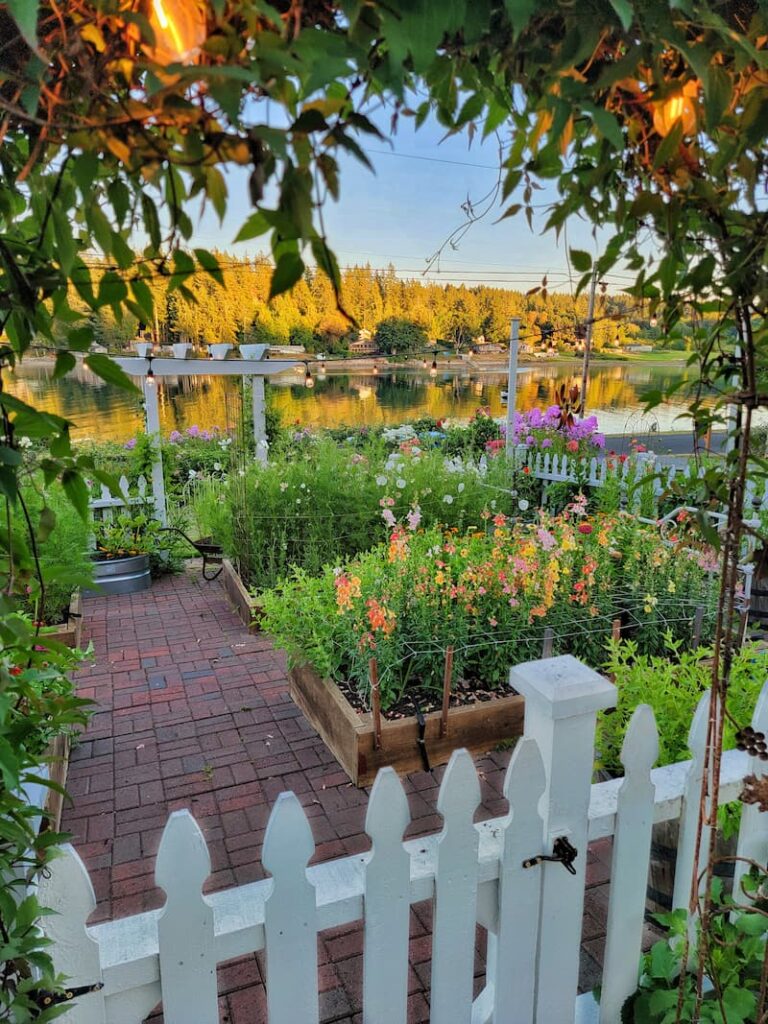
Manage Weeds
Effective weed management is an important spring garden preparation and is essential to ensure your garden thrives.
Landscape Fabric
Using landscape fabric is one of the efficient ways to stay ahead of the weeds in your garden, blocking sunlight while still allowing water and air to reach the soil. This method is very effective for new garden beds or areas prone to aggressive weeds.
Invest in a Hoe
Investing in a lightweight hoe can make regular weed removal much easier and less time-consuming. Hoe young weeds, before they can establish or go to seed, to significantly reduce future weed problems.
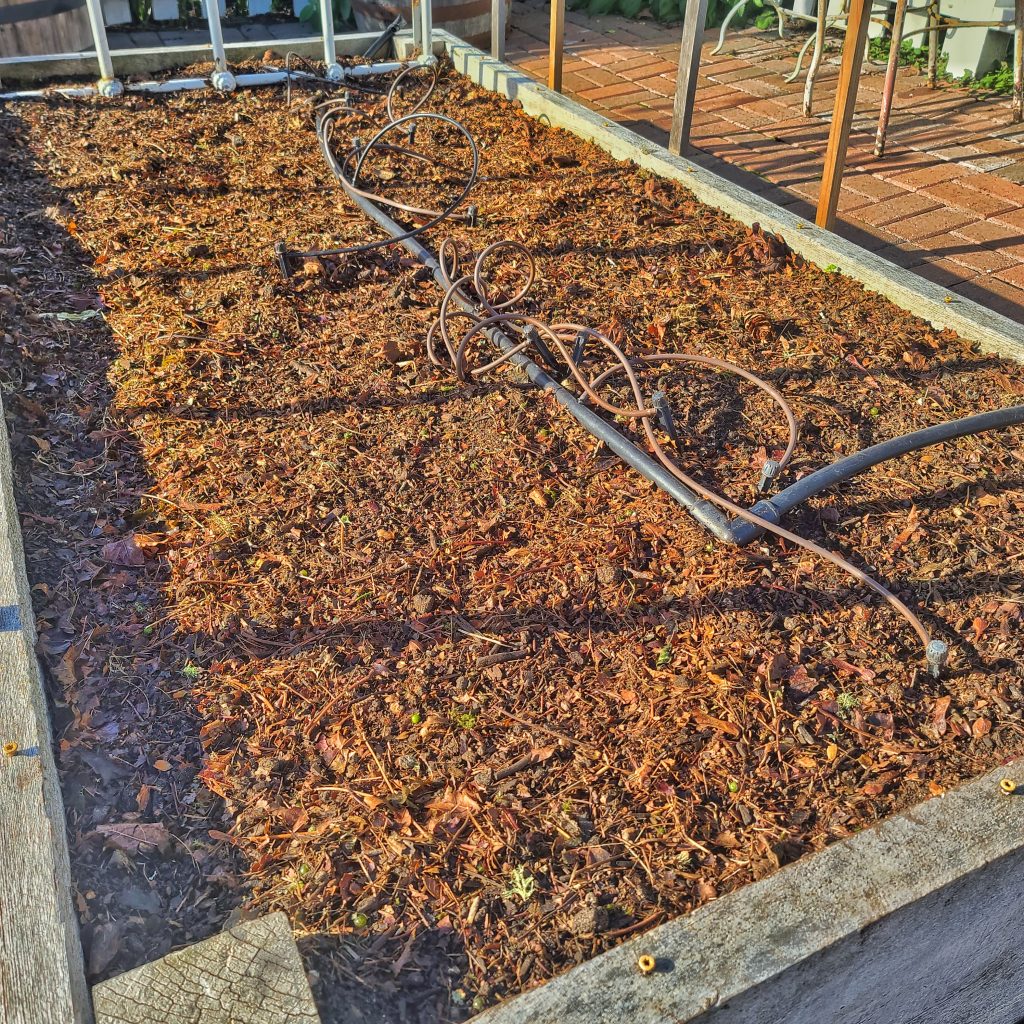
Add Organic Matter to Garden Beds
Covering garden beds with a thick layer of organic matter, such as straw mulch, wood chips, or leaf mold, suppresses existing weed growth and improves soil health over time.
Mulch blocks light from reaching the soil surface, preventing weed seeds from germinating. As it decomposes, it adds valuable nutrients back into the soil.
Companion Planting
Companion planting is another form of weed management. Certain plants can naturally repel pests or even deter weed growth, creating a more balanced and low-maintenance garden ecosystem.
Monitoring and Hand Pulling Your Weeds
Regular monitoring and hand-pulling of weeds can also be an effective strategy, especially when dealing with perennial weeds with deep root systems. Although labor-intensive, removing the entire root prevents weeds from regrowing, providing a long-term solution to weed problems.
SHOP FOR HOES BY CLICKING ON THE IMAGE
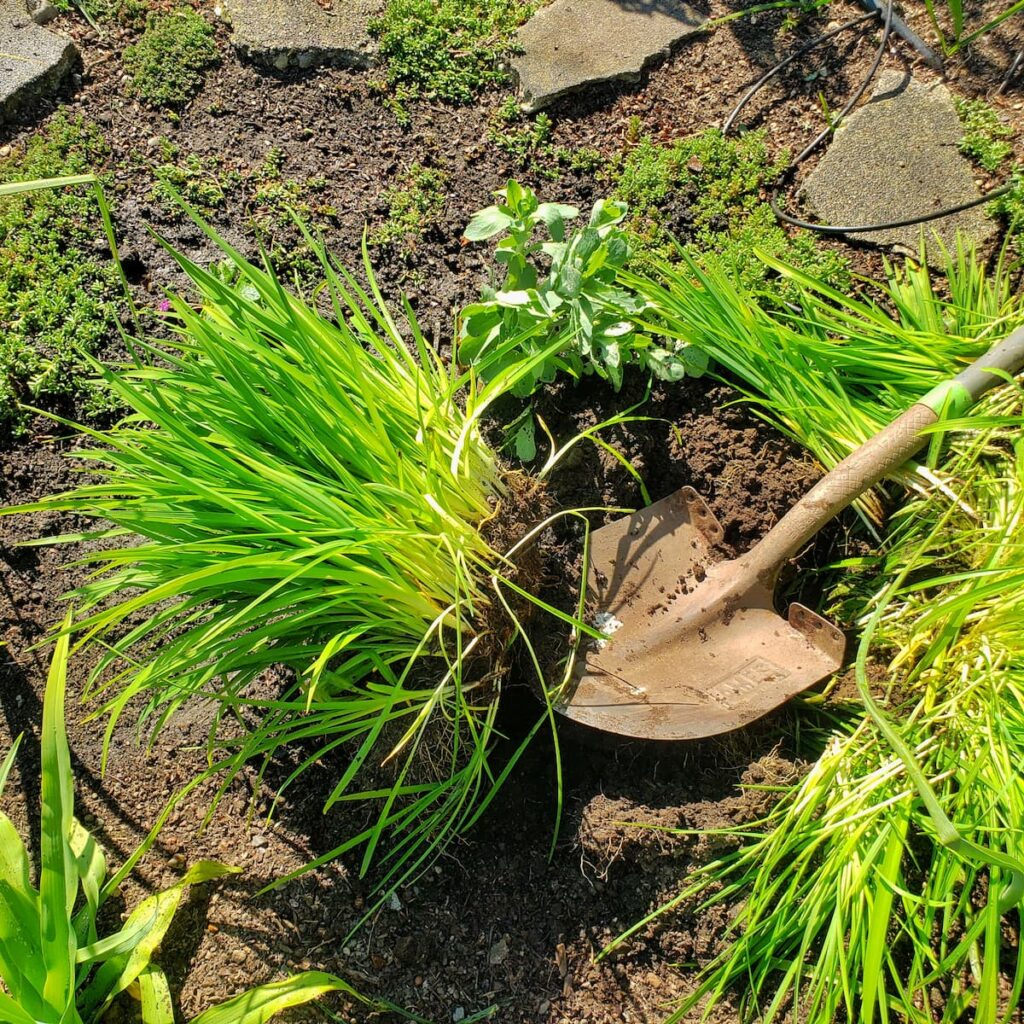
Divide Perennials
If you have perennials in your cut flower garden beds, divide these mature plants to encourage vigorous growth and increase the number of blooms.
For gardeners with established beds, this process helps manage plant size and health and offers an opportunity to expand the garden’s diversity without additional cost.
The best time to divide perennials depends on their flowering time.
Spring and summer blooming flowers are best divided in early fall. A flowering plant blooming in the late summer or fall should be divided in spring. This timing allows the plants to establish their roots well before either the heat of summer or the cold of winter.
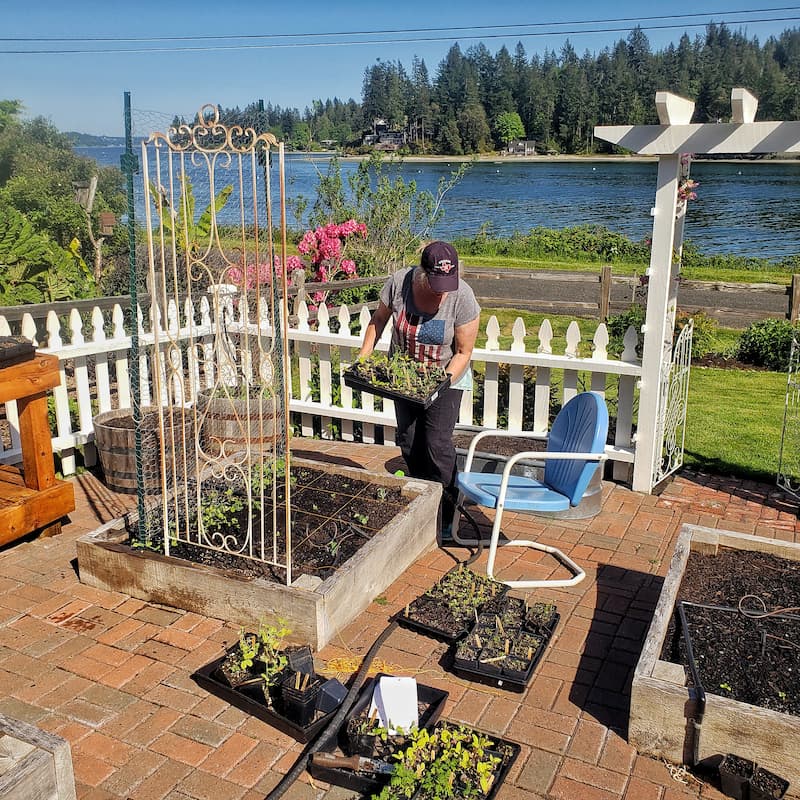
Planting Your Garden Beds
After amending your garden beds, laying the irrigation lines, and managing the weeds, it’s finally time to plant your flower seedlings, perennials, or bulbs.
Use Your Garden Plan
Space your seeds or plants using the garden plan you’ve created for your growing season. Read my blog post in the series to learn more about planning your cut flower garden.
When planting your seedlings, ensure the crown is slightly above the soil surface. This will prevent the plants from getting stressed after they’ve been in the ground and rooting in.
Water all new plants deeply and right away. Giving a weekly application of liquid seaweed and fish emulsion, benefits plants by…
Incorporating a slow-release fertilizer while you prepare the garden beds can provide a continuous nutrient supply.
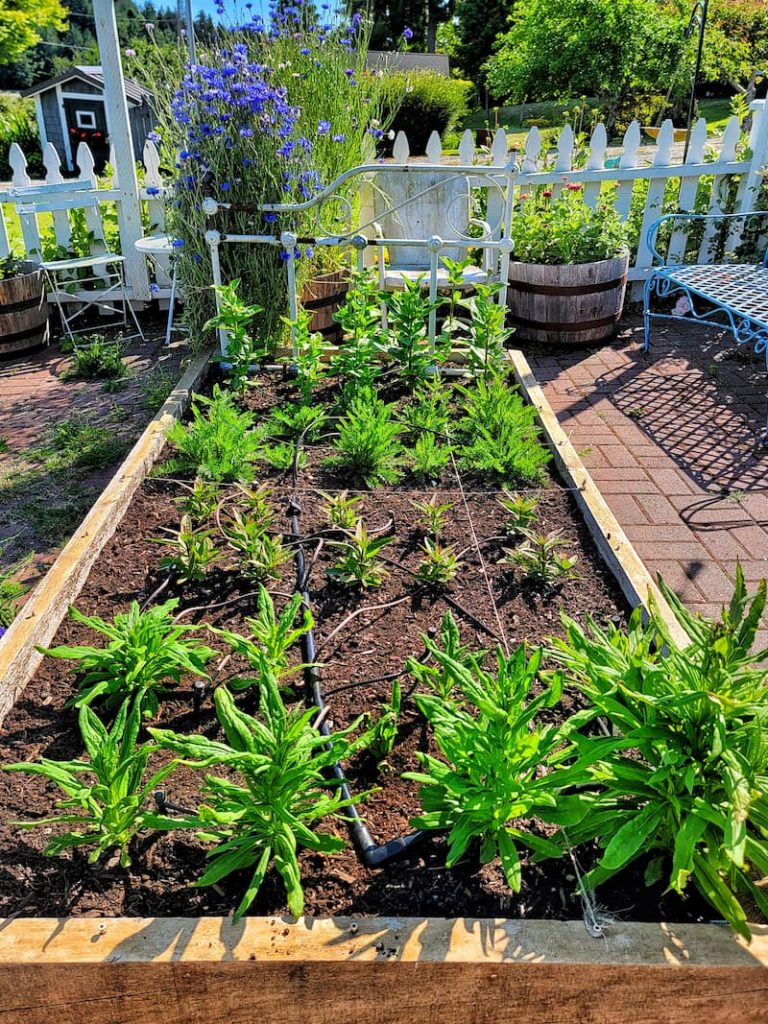
Top Planting Beds With Mulch
Prepare your garden for spring by topping your planting beds with mulch. This will help retain soil moisture by reducing evaporation, suppressing weed growth, and adding a polished look to your garden beds.
As organic mulch breaks down, valuable nutrients are returned to the soil. To prevent potential rot and fungal diseases, add about 2 to 3 inches to the garden beds, leaving a small space around the base of plants.
For the soil health of your garden beds, choose organic options like leaf mold, shredded bark, or straw, which have soil-enhancing properties.
Freshen Up Your Garden Edges
Creating clean edges around your garden beds is not just about aesthetics but has practical purposes that improve the health and maintenance of your garden.
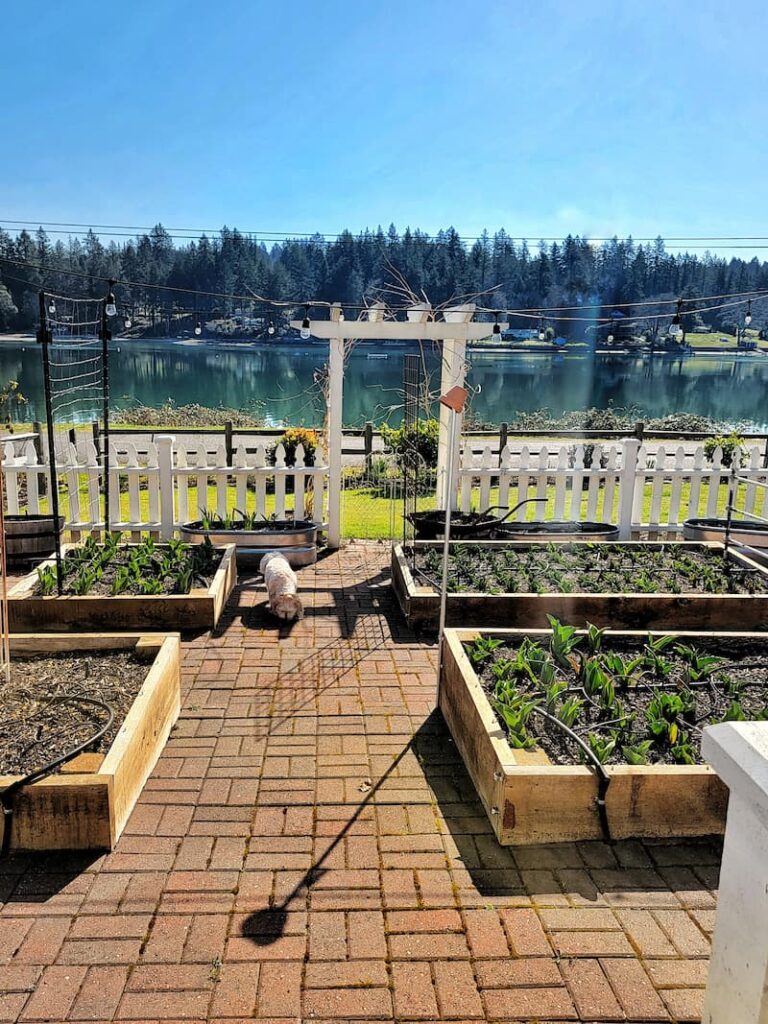
Prepare Spring Flower Beds for Pests
Proactive pest management is key to safeguarding your beautiful flowers throughout the growing season. Here’s how to prepare your flower beds for common garden pests:
‘Growing a Cut Flower Garden’ Series
Learn about the ins and outs of growing a cut flower garden this year. Click the button below to be taken to the entire series of blog posts and choose what is interesting to you.
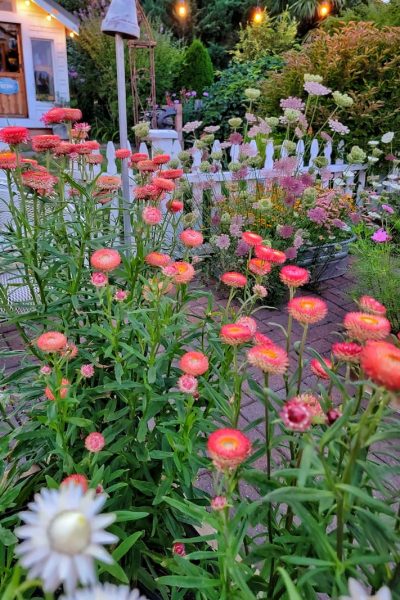
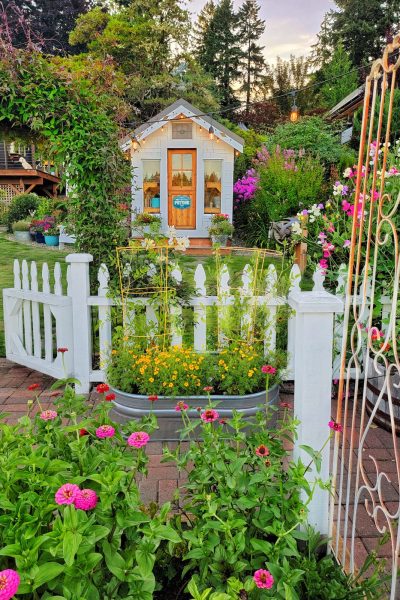


Most Common Questions: How to Prepare a flower Bed for Spring
When Should I Amend My Soil for Spring Planting?
Amending your soil for spring planting is best done in the fall or early spring, depending on your climate and soil condition.
Fall Amendment
Amending soil in the fall takes advantage of the off-season, giving added organic materials like compost, manure, or leaf mold time to break down and integrate into the soil.
This process enriches the soil, making nutrients more available to plants when spring arrives. Additionally, the cooler weather and moisture of fall and winter help facilitate the decomposition process without the rapid evaporation that can occur in summer.
Early Spring Amendment
If you couldn’t amend your soil in the fall, early spring is the next best time, just as the soil becomes workable before planting begins.
You’ll want to ensure the soil isn’t too wet to work with, as tilling wet soil can lead to compaction and damage its structure. A simple test is to grab a handful of soil and squeeze it. If it crumbles easily rather than forming a mud ball, it’s ready to be worked.
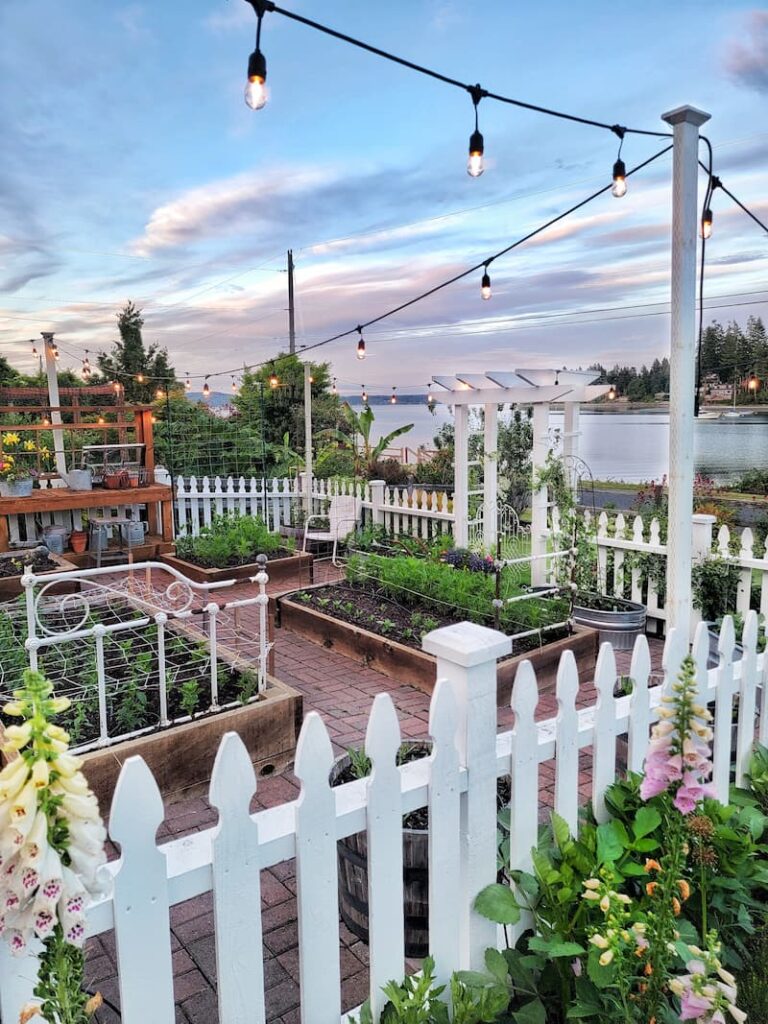
What Can I Do Over the Winter to Prepare My Garden for Spring?
Preparing your garden over the winter sets the stage for a successful spring. While your garden rests, you can take several steps to ensure it awakens to optimal conditions as the weather warms.
Here are some key actions to consider:
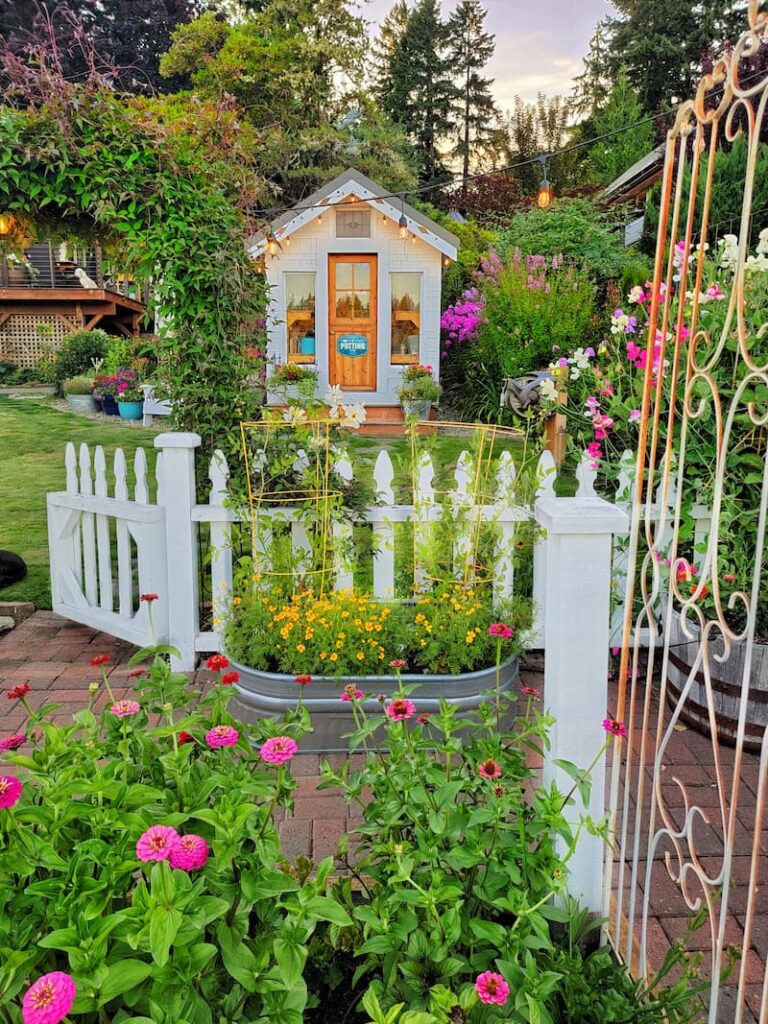
Should You Mulch a Cut Flower Garden?
Yes, mulching a cut flower garden is highly beneficial for several reasons, and it can significantly contribute to the health and productivity of your flowers.
Some key benefits of mulching in a cut flower garden are weed suppression, moisture retention, temperature regulation, soil health improvement, and erosion control.
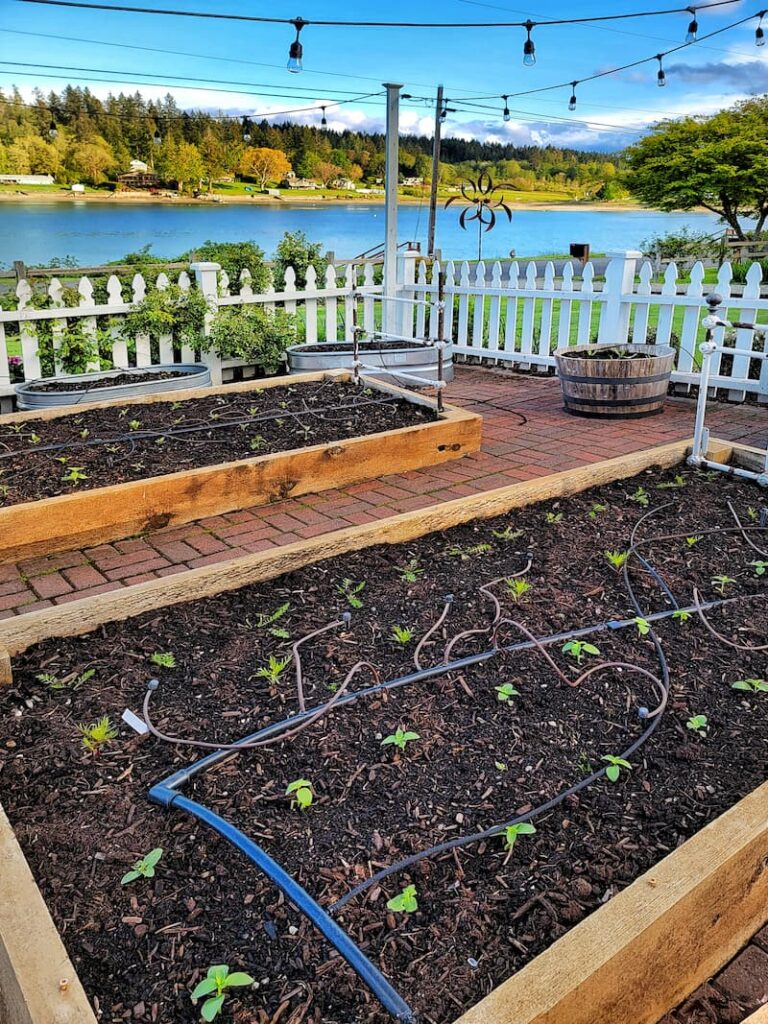
How Deep Should a Flower Bed Be for Cut Flowers?
For most cut flower gardens, a depth of 12 to 18 inches (30 to 45 cm) is generally recommended.
This range accommodates the root systems of various cut flowers, from shallow-rooted annuals to deeper-rooted perennials, ensuring they have enough space to expand and access nutrients and water.
How Do you Amend Soil for Cut Flowers?
Amending soil for cut flowers is critical to ensure your garden provides the best possible environment for flower growth and health. Cut flowers thrive in rich, well-drained soil with balanced nutrients.

What Is the Best Mulch to Use in Flower Beds?
The best mulch for flower beds often depends on your garden needs, including soil type, climate, and the types of flowers you’re growing. However, organic mulches are generally preferred for their soil-enriching benefits.

Final Thoughts for Preparing Your Garden Beds for Spring
Preparing your cut flower garden beds for spring will set the foundation for a vibrant garden with fabulous fresh flowers.
I hope this post has given you valuable information on preparing a flower bed for spring. Remember, the success of your garden starts before the first seedling, perennial, or bulb is planted in the ground.
If you have any questions or additional suggestions, please share them in the comments below. And be sure to share this blog post link with anyone who may find these gardening tips useful.
Until next year.
Happy Gardening!

I’m a self-taught hobby gardener who shares my opinions and what has worked for me in the garden.
Follow Me for More Inspiration
Shop my Amazon Storefront, LTK sources, and my favorite home decor, garden, and lifestyle products. When you purchase from one of my links, I earn a small commission, which helps me continue sharing all the content you expect on my blog.
Be sure to follow me on Pinterest, Instagram, Facebook, TikTok and LIKEtoKNOW.it. Do you like gardening? Join my Facebook Gardening Tips & Tricks group.

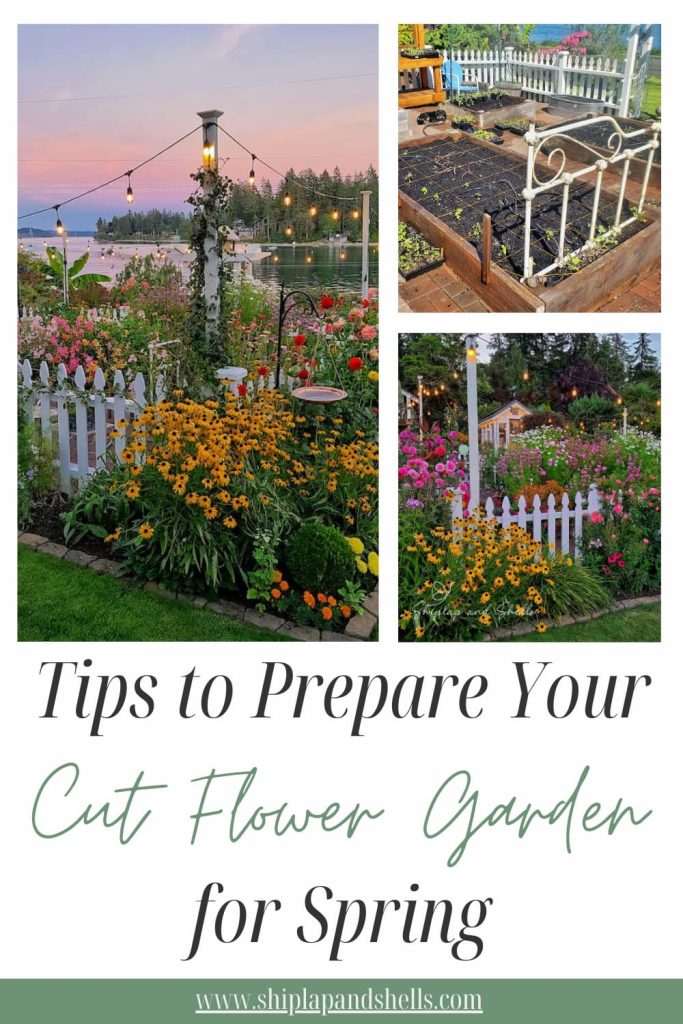


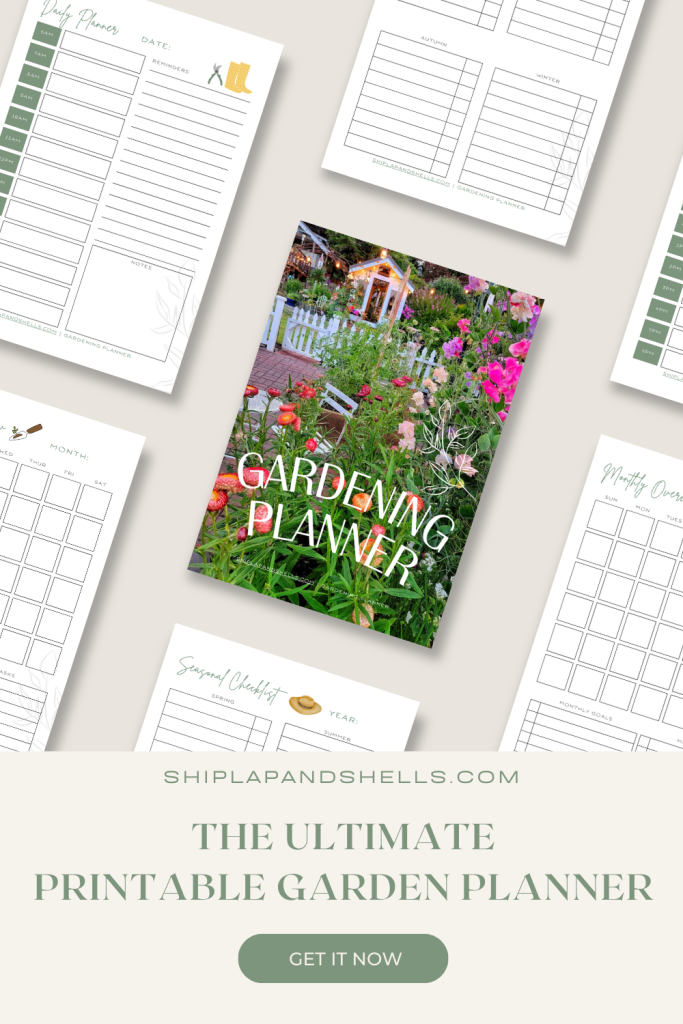

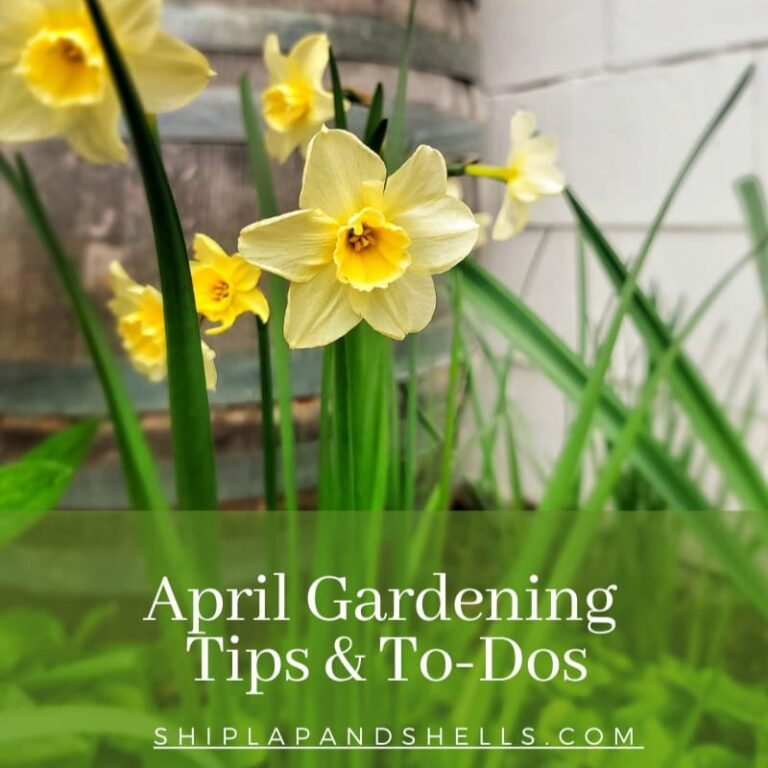
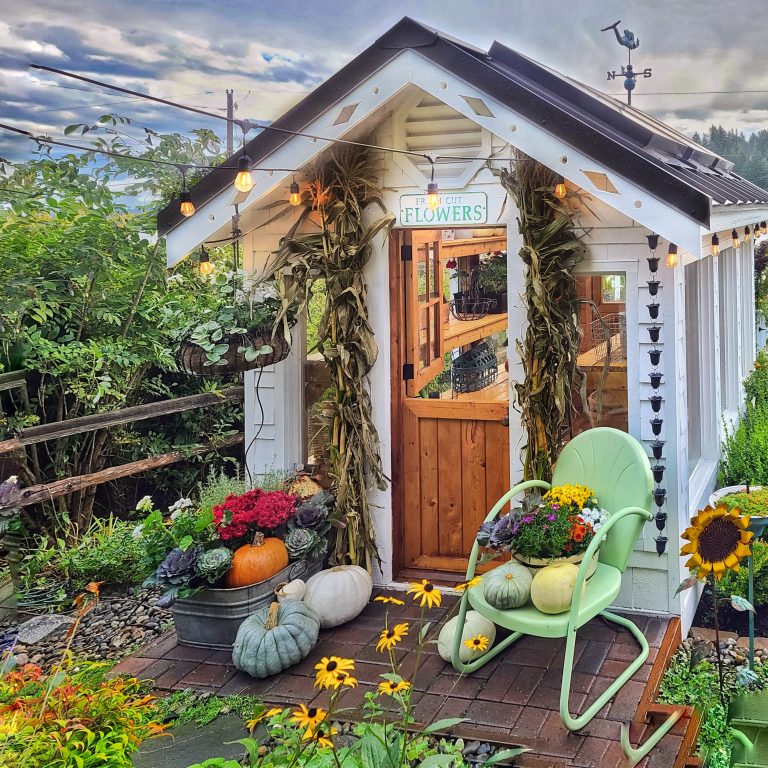

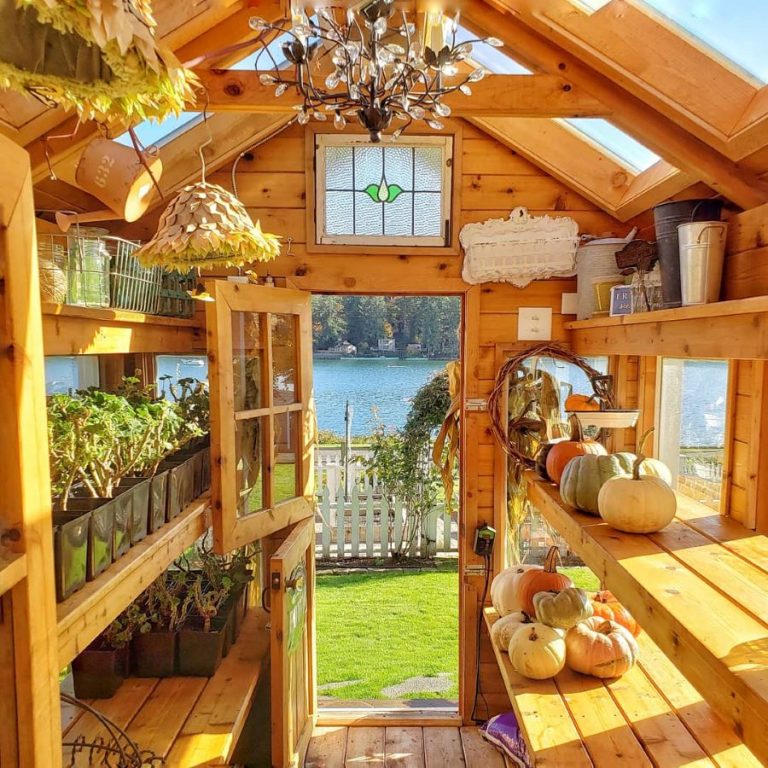

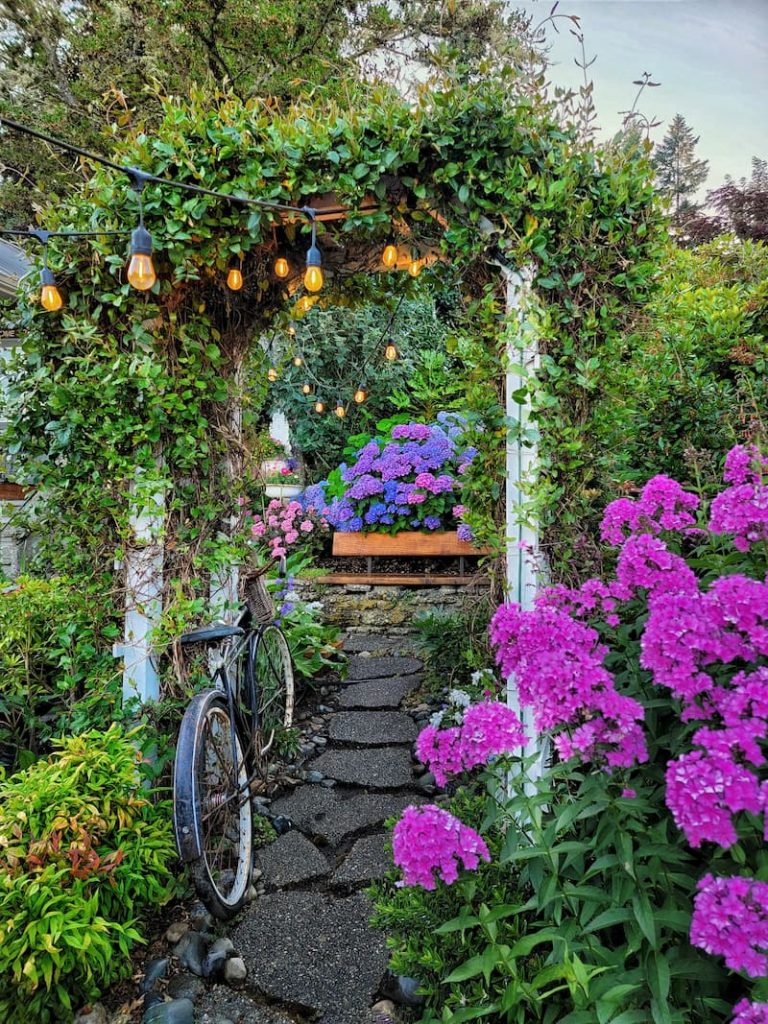
Kim,
Your gardens are always so amazing and so pretty! Thanks so much for sharing!! I was wondering if you have any advice for planting perennials in containers…I am looking to cut back on buying annuals because of the increasing heat and humidity that we seem to be experiencing each Summer here in NEPA…I no longer want to spend my entire Summer watering my annuals in pots , trying to keep them alive like I have been….Thanks so much for your visit!
Hugs,
Deb
Debbie-Dabble Blog
Hi Deb,
Thank you for the wonderful compliment. Have you read my flower container post or my low-maintenance garden blog posts? I’ll share the links so you can get some ideas on plants that don’t need as much watering. Please email me at kim@shiplapandshells.com if you have more questions!
https://shiplapandshells.com/10-low-maintenance-flowers/
https://shiplapandshells.com/flower-container-planting-tips/
This info is so helpful to me. This is my first year of planting a cutting garden. Thanks for sharing all your helpful posts! Wish me luck! ?
I am definitely wishing you lots and lots of luck. I know your garden will look amazing Kim. Can’t wait!
Hi
Beautiful post blog. I read. Wonderful idea.
Thank you Barkat! Have a great week!